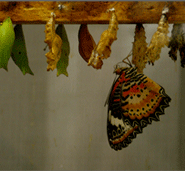The varieties of representation that find their initial source in the city only intensify the confusion of the urban experience. It is interesting to stop and wonder what it is that makes the encounter with the city such an inspiring yet baffling experience.
Is urbanity inherently beyond the scope of artistic portrayal, and is this incapacity, this innate limitation of representative mediums to really ‘capture’ a multi-dimensional experience in its ‘authentic’ entirety the reason why artists/writers/film makers must all return to the city again and again in the hope of grasping its essence without having it slip through their fingers? Or is art in fact a means of making sense of urban existence, a means of imagining, of fantasizing, of pondering over what it might all mean. And in this quest to understand perhaps it is only obvious to discover that the portrayal of the city, and all that it stands for, demands the utilization of all our artistic ammunition, the entire spectrum of our expressive capacity. And thus does Hema Upadhyay’s ‘Extra Ordinary’, serve to concretize this idea.
It is difficult to fix on a single point of inception around which ‘Extra Ordinary’ is built. Multiple layers of meanings lie neatly cemented within its expanse revealing, with various moments of interaction, different aspects of significance. From afar Extra ordinary appears quaint, deceptively engulfed by the grassy green that dominates the canvas. Only a closer look exposes the faint silhouette of the cityscape that shyly peeks from the edges of the grassland and firmly establishes the locale of the fictive setting of the work. But it isn’t until you move closer still and stand before it without any obstruction diffusing your sight or thoughts that you really encounter Extra Ordinary.
There is of course the green pasture and the whiff of the city against it but the epicenter of the work, which holds the piece together and renders meaning to its many elements, is a seemingly innocent cluster of sentences. This central piece, a list of aphorisms related to the city, consists of paper cuttings glued onto the canvas and masqueraded as an up-close perspective into a bunch of overgrown grass. A single flower grows from amidst this thicket and a humming bird, conspicuously diminutive against the backdrop, has its beak dipped deep into its depth even while it hangs upside down in the air.
Recurrent elements evidently haunt Hema’s imagination and in acknowledgement she describes her works as interconnected, pointing to the fact that ideas encountered during the making of a work often lead to successive creations: “Being in a time of image blast in the visual culture of our times I was also looking or rather re-looking into the idea of imagery. In Plato’s The Republic, art imitates physical things, which in turn imitate the Forms, art is always a copy of a copy, and leads us even further from truth and towards illusion. For Plato, these Forms are perfect Ideals, but they are also more real than physical objects. He called them “the Really Real”.
Thus Extra Ordinary plays with those multiple images that are really real, the hummingbird becoming a metaphor for a society that flaps its wings too fast, and is still somehow able to survive amid a whirl of movement and imagery. The humming bird is an ode to everyday optimism, which manages somehow to locate life amid the wasteland of the city in the form of a single stalk of flower. At the root of this otherwise classically hopeful image however, lies a series of longstanding adages (carefully collected from a range of 19th and 20th Century literature) which quickly pulls the work away from the apparent sentimentality of the bird with a flower motif and renders it instead with a slightly unexpected part tongue in cheek ironic, part political, flair. The juxtaposition of the one with the other makes this work difficult to pin down: your encounter with this canvas leaves you with a trail of confusion that can only perhaps be related and understood in context to its attempt at translating a slice of the urban experience.
Calm yet vocal, sentimental yet witty, Hema’s Extra Ordinary is likely to linger in your mind and remind you of the essentially fragmented nature of everyday city life and your own multiple selves, perspectives, disorders and imaginations.
Parni Ray is a writer living and working in Delhi.
Hema Upadhyay was born in 1972 in Baroda and lives and works in Mumbai.
Editor's Note.
Art that utilizes words as its 'paintbrush' is particularly intriguing: as opposed to an abstract stroke and a symbolic color, text is codified, sending great big brainwaves of pre-conceived associations. Its foundations lie in a system of signs and signifiers, with sounds and symbols that represent each word, syllable and letter.
Read MoreAlso in this issue
Illusion: Seeing Beyond Seeing
Meaning: In Search of Significance.
Melody: A Different Tune
Rhythm: Ordering Time









